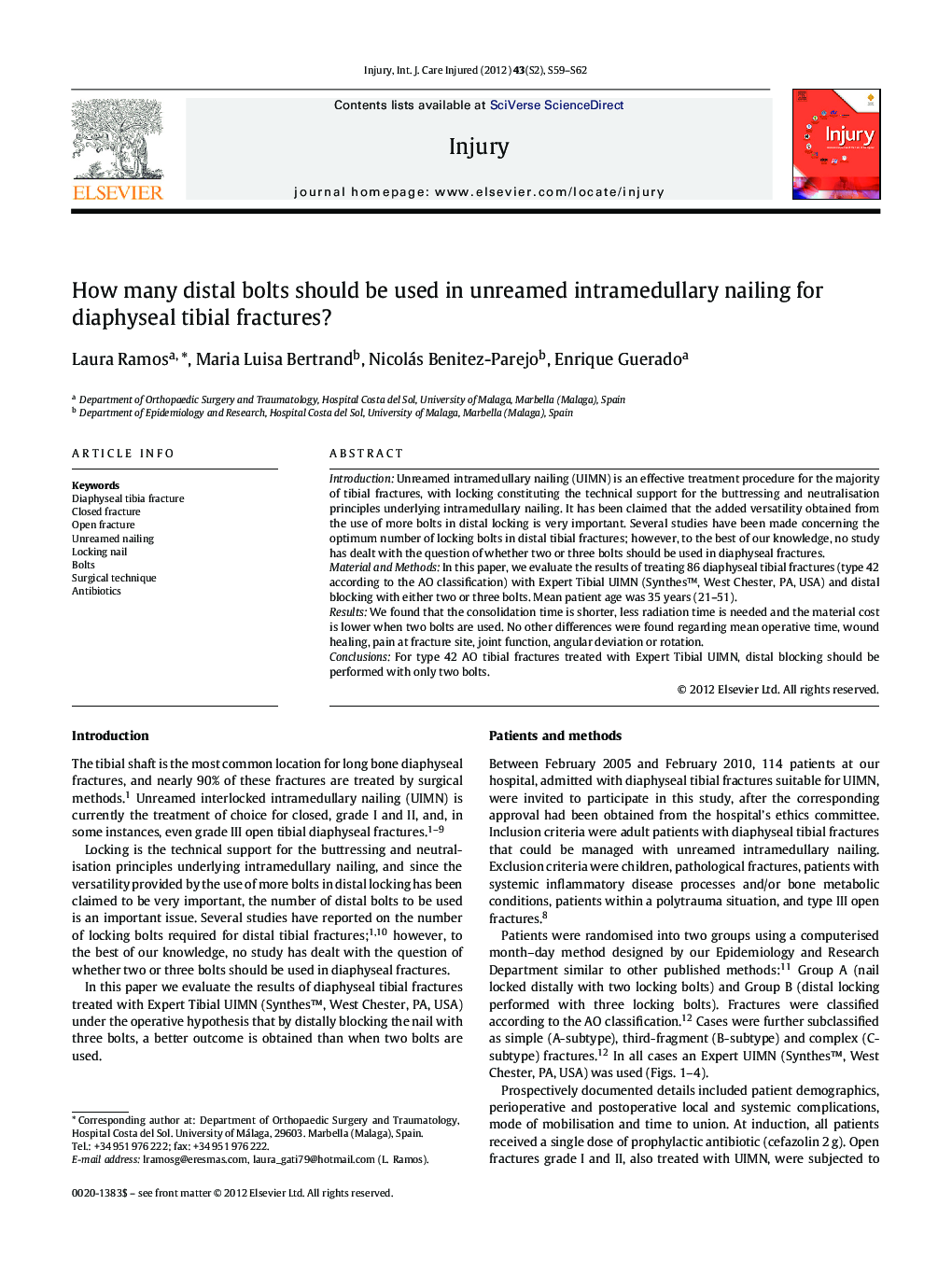| Article ID | Journal | Published Year | Pages | File Type |
|---|---|---|---|---|
| 3241348 | Injury | 2012 | 4 Pages |
IntroductionUnreamed intramedullary nailing (UIMN) is an effective treatment procedure for the majority of tibial fractures, with locking constituting the technical support for the buttressing and neutralisation principles underlying intramedullary nailing. It has been claimed that the added versatility obtained from the use of more bolts in distal locking is very important. Several studies have been made concerning the optimum number of locking bolts in distal tibial fractures; however, to the best of our knowledge, no study has dealt with the question of whether two or three bolts should be used in diaphyseal fractures.Material and MethodsIn this paper, we evaluate the results of treating 86 diaphyseal tibial fractures (type 42 according to the AO classification) with Expert Tibial UIMN (Synthes™, West Chester, PA, USA) and distal blocking with either two or three bolts. Mean patient age was 35 years (21–51).ResultsWe found that the consolidation time is shorter, less radiation time is needed and the material cost is lower when two bolts are used. No other differences were found regarding mean operative time, wound healing, pain at fracture site, joint function, angular deviation or rotation.ConclusionsFor type 42 AO tibial fractures treated with Expert Tibial UIMN, distal blocking should be performed with only two bolts.
